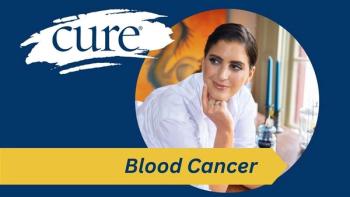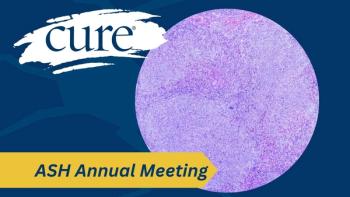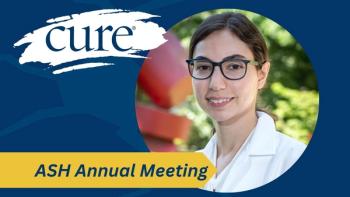
- Spring 2007
- Volume 6
- Issue 2
Survivors at Risk for Cognitive Dysfunction
Cognitive dysfunction remains a problem for young patients.
Of the 10 million or so cancer survivors in the United States, experts estimate more than a quarter million were diagnosed before age 21. Although survival has improved, childhood cancer therapies can have a long-term impact, including congestive heart failure, second cancers and cognitive dysfunction.
Since 1993, the Childhood Cancer Survivor Study has tracked the long-term and late effects associated with cancer therapy. One aspect of the study found that childhood cancer survivors who received therapy in the 1970s and ’80s were three times more likely to develop a chronic health condition later in life than their healthy siblings. Specifically, survivors were eight times more likely to experience severe chronic disorders, such as cognitive dysfunction. This effect was found to occur more often in survivors with cancers of the central nervous system, such as medulloblastoma, a common type of childhood brain cancer.
“What we’re referring to is the changes that are largely related to radiation [to the brain] and are severe enough to either affect one’s schooling or their ability to live independently for those in the severe category,” says Kevin Oeffinger, MD, lead author on the CCSS analysis published last year in The New England Journal of Medicine that studied chronic health conditions in adult survivors of childhood cancer—one of the more than 70 articles published from the CCSS.
Dr. Oeffinger says although survivors with severe cognitive dysfunction made up less than 3 percent of study participants, the results may be significantly understated. For the CCSS analysis, severe cognitive dysfunction was defined as patients who are not able to live independently, for example.
Researchers are currently analyzing data collected in the past two years, which will go into greater detail with how survivors are doing in regards to functioning. Results are expected in the next year or so.
Evidence suggests one reason this high-intensity treatment may cause cognitive dysfunction is the resulting reduction of normal-appearing white matter in the brain, says Heather Conklin, PhD, a pediatric neuropsychologist in the division of behavioral medicine at St. Jude Children’s Research Hospital in Memphis. In contrast to gray matter, which controls sensory perception and motor function and is made up of neurons, white matter, or myelin, insulates nerve fibers and facilitates the high-speed transmission of nerve signals throughout the brain. White matter continues to increase throughout a person’s 20s and 30s, but “we’ve been seeing in structural neuroimaging a reduction in normal-appearing white matter in some children that have been treated with chemotherapy and radiation therapy,” Conklin says.
In addition to the intensity or amount of chemotherapy or radiation directed at the brain and spinal cord, scientists have found other factors that may increase risk for cognitive problems, including the location of the tumor, female gender and age at treatment—children who are treated at a younger age are at greater risk for cognitive dysfunction over time. The time since treatment is also an important indictor.
“In some children, you won’t see cognitive dysfunction in the first few years,” Conklin says. “The process is a gradual one that emerges years after they completed their treatment.”
Problems with attention, working memory (the ability to hold and manipulate information) and slower processing speed, such as the speed of problem solving, reading and writing, are symptoms survivors and their caregivers should watch for if they are at risk for cognitive dysfunction.
“We recommend they first see a clinician that is familiar with the health problems of pediatric cancer survivors and be evaluated, and if needed, we will do cognitive testing,” Dr. Oeffinger says. Cognitive testing gives doctors a better understanding of where cognitive limitations may or may not exist, and allows for development of a plan to help the survivor with school or in the workplace.
As late effects, such as cognitive dysfunction, have become better understood, treatments have changed. In particular, most patients with acute lymphoblastic leukemia (ALL) are no longer treated with radiation, and when they do need radiation, lower doses are used. Also, the radiation doses used to treat patients with brain tumors today is generally lower that doses used in the ’70s and ’80s.
“We anticipate that ALL survivors treated now will have a lower risk of cognitive problems than those treated back in the 1970s,” Dr. Oeffinger says. “And likewise, we anticipate our brain tumor survivors—by reducing doses and fields of radiation—they will also fare better than patients treated back in the 1970s.”
Articles in this issue
almost 19 years ago
Message from the Editoralmost 19 years ago
Letters from Our Readersalmost 19 years ago
Surfer Wisdomalmost 19 years ago
Deadly Accuracyalmost 19 years ago
The Weight Gain Mysteryalmost 19 years ago
Hazardous to Your Heartalmost 19 years ago
What Five Years Really Meansalmost 19 years ago
Prescription for Troublealmost 19 years ago
Report Incites Controversy After Breast Cancer Decline Linked to HRT Usealmost 19 years ago
Liver Cancer: More Cases, More Causes




